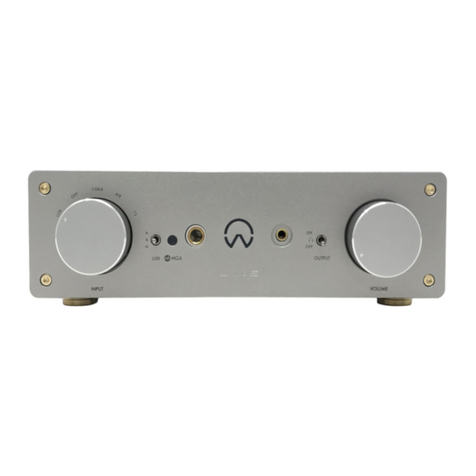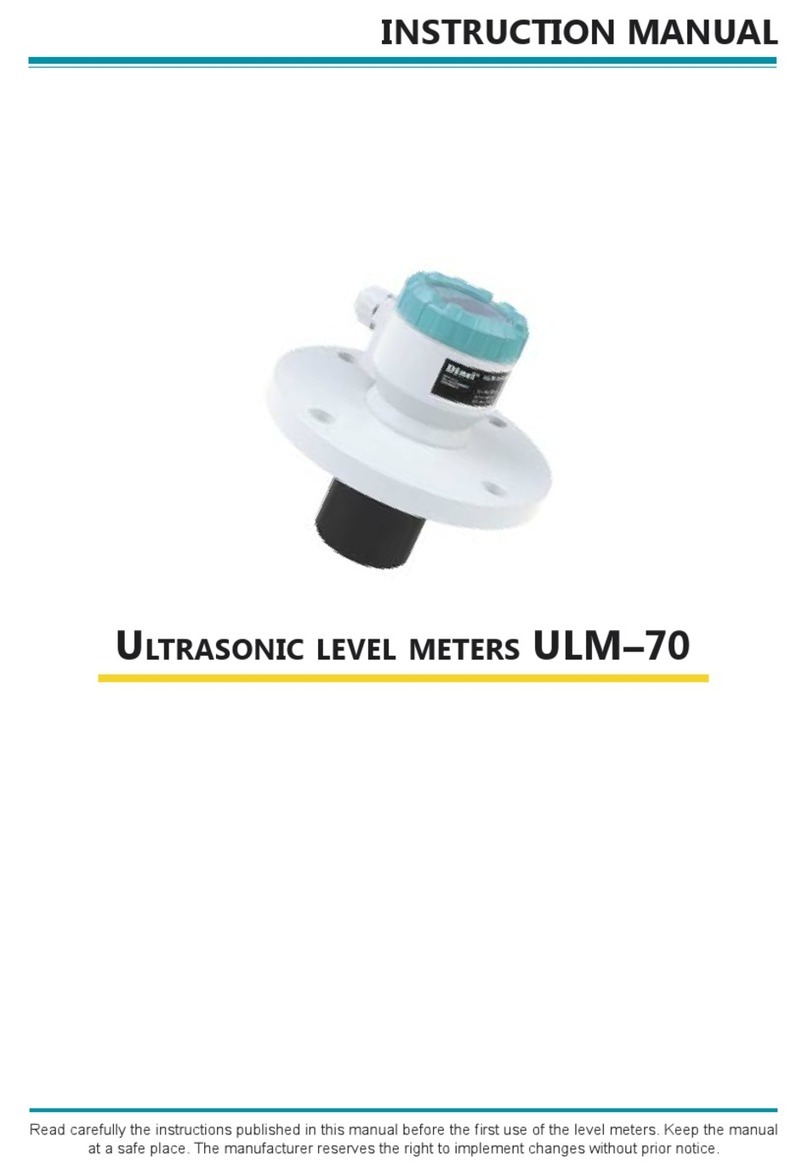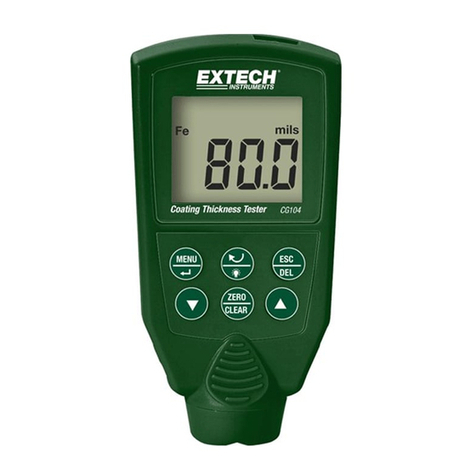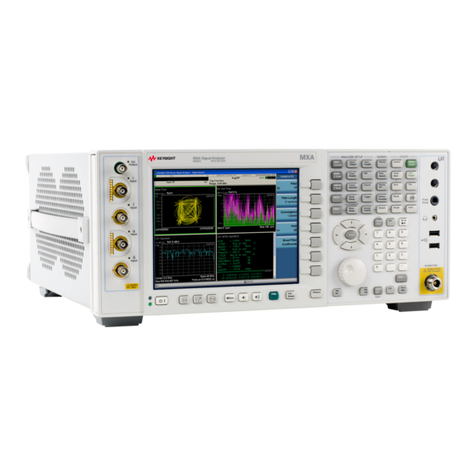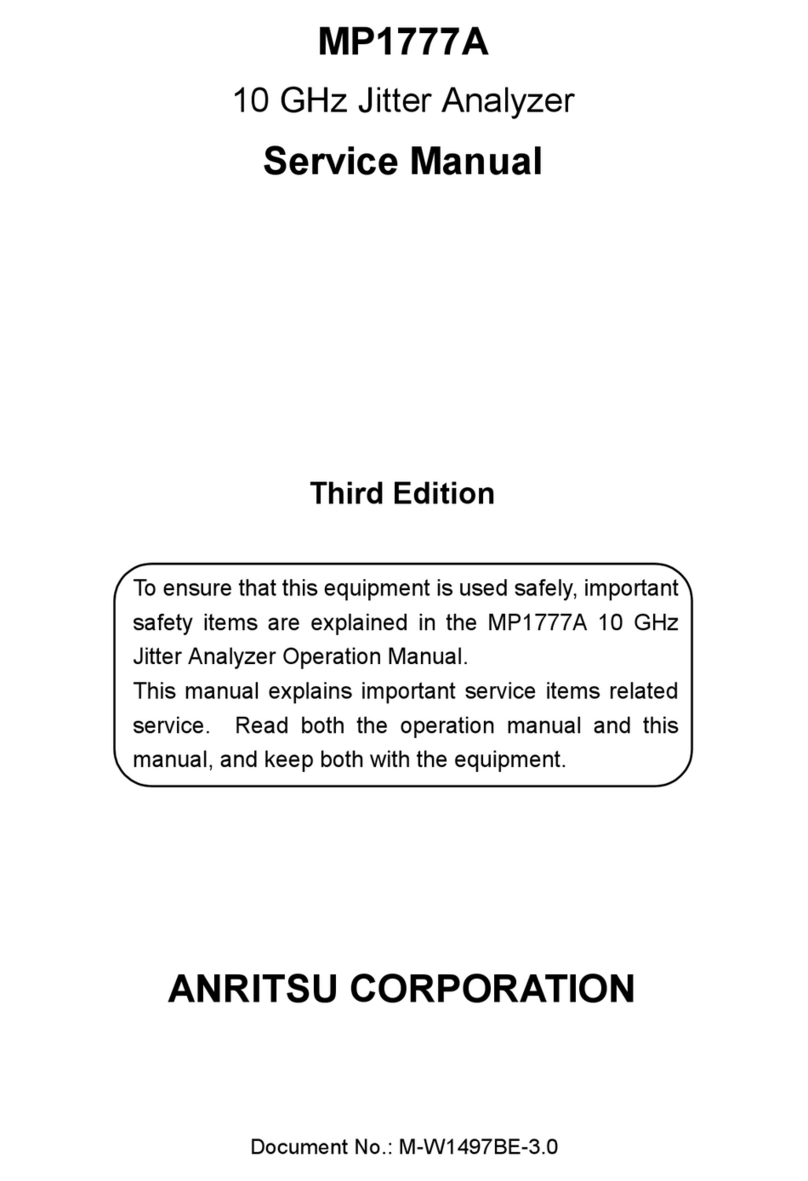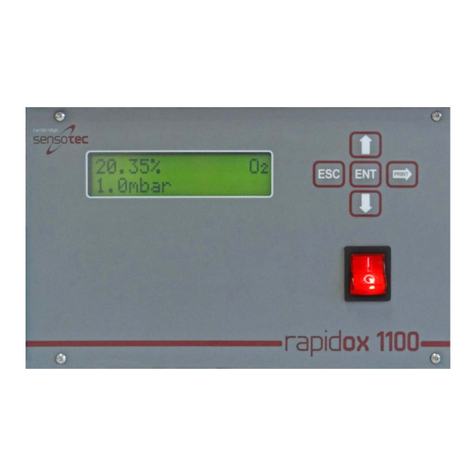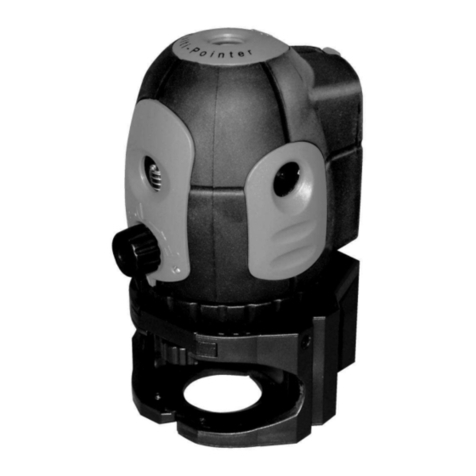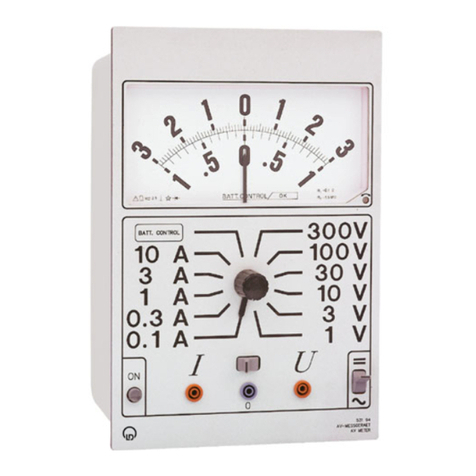SpiroHome Lite User manual

PEF & FEV1meter
User Manual
Welcome to SpiroHome Lite
Before using your SpiroHome Lite (Ref No: 14000) device and mobile application,
please ensure that you have read this user manual, all labelling and information
provided with the product. The user manual can be downloaded and/or printed from
İnofab’s website (www.inofab.health) and Apps.
14503.03
SUS-TD-074 R03
2/71

INDEX
INDEX 2
Introduction 4
Product Description 4
What’s in the box? 4
Intended Use 5
Restrictions on use and Contradictions 5
Parameters 8
Operation 8
Operating Environment 8
Setting up the Device 10
Device Indicators 12
Performing a PEF & FEV1 Test 13
Understanding the Test Quality 15
Signs and Symbols 17
Technical Features 19
Safety Warnings and Precautions 20
Maintenance 22
Cleaning and Disinfection 23
Cleaning and disinfection of SpiroHome Lite 23
Cleaning and disinfection of SpiroWay Reusable 24
Batteries 25
Instructions for Handpiece Battery Replacement 25
Disposal of SpiroHome Lite 28
Troubleshooting 28
Orderable Accessories 30
Terms of Warranty 30
Electromagnetic Compatibility 31
Manufacturer Information 35
Revision History 36
SUS-TD-074 R03
3/71

1. Introduction
1.1. Product Description
SpiroHome®Lite is a PEF & FEV1meter that pairs (via Bluetooth®) and operates with smart
devices running iOS or Android. SpiroHome Lite measures and displays certain parameters of
lung function of the user. The user performs a test as described in the Performing PEF & FEV1
Test section of this user manual.
Briefly, as the user exhales through the device, internal ultrasonic sensors detect the velocity of
the exhaled air, the device converts this information into PEF & FEV1test data and displays it on
the SpiroHome Application. The SpiroHome App prompts and guides the user throughout the
test for accurate data collection and registration. The app can be downloaded on Apple’s App
Store or Google Play Store.
SpiroHom Lite consists of a handpiece, a removable Mouthpiece(SpiroWay Reusable), and a
cap.
The device is powered by 2 x AAA batteries for the. SpiroHome Lite works with the SpiroWay
Reusable Mouthpiece.
1.2. What’s in the box?
The SpiroHome Lite box contains:
● SpiroHome Lite Device (b)
● SpiroWay Reusable mouthpiece (a)
● SpiroHome Lite Cap (c)
● Carrying pouch (d)
● Quick Start Guide
SUS-TD-074 R03
4/71

Figure 1: SpiroHome Lite Box Content.
!!Caution:
Please check to ensure that there is no visible damage on any of the components of the
SpiroHome Lite. If the damage is present, do not use or attempt to repair the device, please
contact the manufacturer directly.
1.3. Intended Use
SpiroHome Lite is intended for home use to monitor PEF (Peak Expiratory Flow) and FEV1
(Forced Expiratory Volume in the first second). See the Parameters section for more information
on measured parameters. The SpiroHome Lite is indicated for:
- children (over the age of 5), adolescents or adults who may have been diagnosed with a
chronic pulmonary disease including, but not limited to, asthma, chronic obstructive
pulmonary disease and cystic fibrosis.
1.4. Restrictions on use and Contradictions
a. Any diagnosis of conditions or prescribed treatments should be made only by a qualified
healthcare professional who, in addition to the test results provided by SpiroHome Lite,
will take into consideration the outcomes of a medical examination, the patient’s clinical
history and results of any other tests deemed necessary.
b. SpiroHome Lite is a single-user device. If the device will be used by a new user,
ensure that the data of the previous user is erased from the device memory, their
SUS-TD-074 R03
5/71

account is removed from the app and a new user account is created for the new user.
The device must also be cleaned and disinfected according to the information given in
this user manual before use by a new user.
c. A SpiroWay Reusable mouthpiece must not be shared between users, including family
members. A new mouthpiece must be used for a new user.
d. The PEF & FEV1test should only be performed by users who do not experience any
shortness of breath and are in good health for performing the test. Test results of
patients who do not meet these conditions may not be reliable. A correct PEF & FEV1
test depends greatly on the patient’s ability to correctly perform the expiratory maneuver
as described in this manual. Failure to perform a correct maneuver may lead to
inaccurate and unacceptable results. The device should not be used if the accuracy and
reliability of test results may be jeopardized by external factors.
e. Performing PEF & FEV1can be physically demanding. The forced expiratory maneuver
used in PEF & FEV1increases intrathoracic, intraabdominal, and intracranial pressures.
Potential risks of PEF & FEV1tests are primarily related to maximal pressures generated
in the thorax and their impact on abdominal and thoracic organs, venous return and
systemic blood pressure, and expansion of the chest wall and lung. The physical effort
required can increase myocardial demand. Caution must be used for patients with
medical conditions that could be adversely affected by these physiological
consequences. Although such risks are likely to be minimal for PEF & FEV1in most
patients, the potential risks associated with testing should always be weighed against
the benefit of obtaining information about lung function. PEF & FEV1should be
discontinued if the patient experiences pain during the maneuver. Patients with potential
contraindications that would prevent testing in the primary care setting may be tested in
a pulmonary function laboratory where operators are more experienced and there may
be access to emergency care if needed. Furthermore, because PEF & FEV1requires the
active participation of the patient, inability to understand directions or unwillingness to
follow the directions of the user manual and SpiroHome App will usually lead to
submaximal test results.
Relative Contraindications for PEF & FEV1test;
Due to increases in myocardial demand or changes in blood pressure;
➢Acute myocardial infarction within 1 wk
➢Systemic hypotension or severe hypertension
➢Significant atrial/ventricular arrhythmia
➢Non-compensated heart failure
➢Uncontrolled pulmonary hypertension
➢Acute cor pulmonale
SUS-TD-074 R03
6/71

➢Clinically unstable pulmonary embolism
➢History of syncope related to forced expiration/cough
Due to increases in intracranial/intraocular pressure;
➢Cerebral aneurysm
➢Brain surgery within 4 wk
➢Recent concussion with continuing symptoms
➢Eye surgery within 1 wk
Due to increases in sinus and middle ear pressures;
➢Sinus surgery or middle ear surgery or infection within 1 wk
Due to increases in intrathoracic and intra abdominal pressure;
➢Presence of pneumothorax
➢Thoracic surgery within 4 wk
➢Abdominal surgery within 4 wk
➢Late-term pregnancy
Infection control issues;
➢Active or suspected transmissible respiratory or systemic infection, including tuberculosis
➢Physical conditions predisposing to the transmission of infections, such as hemoptysis,
significant secretions, or oral lesions or oral bleeding
!! Warning:
If you have or suspect having any of the conditions consult your healthcare professional
before using SpiroHome Lite.
SUS-TD-074 R03
7/71

1.5. Parameters
The SpiroHome Lite records and displays the following PEF & FEV1test data:
Parameters
Definition
Unit
FEV0.75
Forced Expiratory Volume within 0.75 seconds: The volume of air
that can forcibly be blown out within 0.75 seconds, after full
inspiration.
L
FEV1
Forced Expiratory Volume within 1 second
L
PEF
Peak Expiratory Flow — The maximal flow rate achieved during
the maximally forced expiration initiated at full inspiration.
L/s
BEV
Back extrapolated volume
L
-
PEF Rise Time
ms
-
Hesitation time
ms
The recommended number of trials per PEF & FEV1test session is 3, however, the user may
perform up to 8 trials*. The best values obtained from the PEF & FEV1test performed in one
session are displayed on the app interface. Users and healthcare professionals have the option
to view the results of each PEF & FEV1trial performed in a PEF & FEV1test session separately.
The device also provides a reference value (obtained from large epidemiological studies on the
patient’s height, weight, sex and ethnicity. Test results from PEF & FEV1tests are compared to
the reference value and displayed as a percent predictive value indicator of the patient’s
respiratory health. The patient’s personal best value for a PEF & FEV1test session should be
discussed with them for medical interpretation.
*According to ATS Standardisation of Spirometry 2019 update
!!Caution: Interpretation of PEF & FEV1test results or diagnosis of any medical
conditions must only be made by a qualified physician or allied health care professional.
2. Operation
2.1. Operating Environment
The SpiroHome
®
Personal is intended to be used in home settings. It is not intended for use in
clinical settings such as hospitals or private clinics.
The required operation conditions for the SpiroHome
®
Personal are:
SUS-TD-074 R03
8/71

Ambient temperature: +15°C to +35°C
Relative Humidity: 10% to 85%
Pressure: 700 hPa to 1060 hPa
The SpiroHome
®
Personal should only be used within the ambient temperature, relative
humidity and ambient pressure ranges given above. The device should remain within this range
for at least 1 hour before use.
Storage / Transport Environment
The required storage conditions for the SpiroHome
®
Personal are:
Ambient temperature: -20°C to +60°C
Relative Humidity: 5% to 85%
Pressure: 700 hPa to 1060 hPa
The required transport conditions for the SpiroHome
®
Personal are:
Ambient temperature: -20°C to +60°C
Relative Humidity: 5% to 85%
Pressure: 700 hPa to 1060 hPa
The SpiroHome
®
Personal should not be used in the presence of inflammable liquids or
detergents, nor in the presence of inflammable anesthetic gases (oxygen or nitrogen).
The device should not be used in direct air currents (e.g. wind), sources of heat or cold, direct
sun rays or other sources of light or energy, dust, sand or any other chemical substances.
SUS-TD-074 R03
9/71

2.2. Setting up the Device
1. Download the SpiroHome mobile
application from Apple App Store or
Google Play store into your smart
device
2. Follow the steps given in the app to
create an account as a new user or
login to your existing account if you
have one.
3. Slide open the battery cover, insert the AAA batteries in the correct orientation, slide
the battery cover back to the closed position and press the power button to switch on
the device as shown
SUS-TD-074 R03
10/71

4. Enable Bluetooth®on your smart device and then open SpiroHome App. pair the
SpiroHome Lite with your smart device by following the instructions on the app.
!!Caution: Pairing of the device is made inside the SpiroHome application. Do not try to pair
your device in bluetooth®settings of your mobile phone.
SUS-TD-074 R03
11/71

2.3. Device Indicators
There are 3 LED lights located on the front of
the device. The LED lights may be turned on
or flashing various colors in various patterns.
The LED lights indicate the current status of
the device. Please see the following
information for guidance on LED light
indications.
LED Display
Indication/s
None of the LEDs are on
The device is switched off
LED indicators are consecutively flashing
green
The device is switching on
LED number 3 is constantly flashing green
The device is switched on
LED number 2 is fading blue.
The device is connected to the app. Bluetooth®
connection has been established
LED number 2 and LEDs 1 and 3 together are
flashing yellow in turn
The zero flow level adjustment is setting up
LED number 1 is constantly blue
The device is ready for a test
During a test, LED number 1 is constantly
yellow
The test has timed-out (there has been no
inhalation/exhalation over a while)
During zero flow level adjustment setup LED
number 1 is constantly yellow
The zero flow level adjustment setup has been
unsuccessful
All LEDs are flashing red
There is a foreign object between the sensors.
(Check device error in troubleshooting section)
LEDs are consecutively flashing yellow
Over-the-air connection is being established
SUS-TD-074 R03
12/71

LED number 3 flashes red three times
Battery low warning
LEDs flash in reverse order and remain
switched off
The device is switching off
2.4. Performing a PEF & FEV1Test
1. Sit upright with your back straight and
your feet flat on the ground.
2. Remove the SpiroWay Reusable
mouthpiece from its plastic packaging
and insert it all the way into the
SpiroHome Lite in the correct
orientation (as shown). You will hear a
click when the mouthpiece is fully
inserted into the device.
3. Open the SpiroHome App on your
smart device and make sure you are
signed in. Tap the ‘+’ button to start
the test procedure.
4. Follow the instructions that appear on
the screen. The first step will be a
zero flow level adjustment for the
device. You will need to leave the
device on a flat surface for this
process to be completed safely.
SUS-TD-074 R03
13/71

5. Place the mouthpiece in your mouth
past your teeth, and form a tight seal
around the mouthpiece with your lips.
6. Without hesitation and with your lips
sealed tightly around the mouthpiece,
inhale rapidly to maximum lung
capacity and then blow out the air in
your lungs as hard and fast as you
can. Keep blowing at least 1 second.
You may use a nose clip at the
beginning of the procedure to ensure
that you are exhaling only through
your mouth.
7. Repeat these steps for each successive trial, ensuring that you rest for at least 20
seconds between each trial. Performing 3 successful trials is recommended in 1 test
session.
SUS-TD-074 R03
14/71

8. After completing your test session,
switch off the device by pressing the
power key. Use the cap to protect the
mouthpiece from contamination when
the device is not in use.
2.5. Understanding the Test Quality
After each test session, the quality of your test will be graded based on how well you performed
the breathing maneuver and whether your results are acceptable, usable or neither. This
grading relates to the consistency of your blows, not the health of your lungs.
NOTE: In the following section, only FEV1is applicable to this product as it does not
measure FVC.
Grading of the FVC and FEV1parameters in children and adults, according to the American
Thoracic Society (ATS) and European Respiratory Society (ERS) Standardization of Spirometry
2019 update: https://www.atsjournals.org/doi/full/10.1164/rccm.201908-1590ST#
Summary of Acceptability, Usability, and Repeatability Criteria for FEV1and FVC
Acceptability and Usability Criterion
Required for
Acceptability
Required for
Usability
FEV1
FVC
FEV1
FVC
Must have BEV ≤5% of FVC or 0.100 L, whichever is greater
Yes
Yes
Yes
Yes
Must have no evidence of a faulty zero-flow setting
Yes
Yes
Yes
Yes
Must have no cough in the first second of expiration*
Yes
No
Yes
No
Must have no glottic closure in the first second of expiration*
Yes
Yes
Yes
Yes
SUS-TD-074 R03
15/71

Must have no glottic closure after 1 s of expiration
No
Yes
No
No
Must achieve one of these three EOFE indicators:
1. Expiratory plateau (≤0.025 L in the last 1 s of
expiration)
2. Expiratory time ≥15 s
3. FVC is within the repeatability tolerance of or is greater
than the largest prior observed FVC †
No
Yes
No
No
Must have no evidence of obstructed mouthpiece or spirometer
Yes
Yes
No
No
Must have no evidence of a leak
Yes
Yes
No
No
If the maximal inspiration after EOFE is greater than FVC, then
(FIVC — FVC) must be ≤0.100 L or 5% of FVC, whichever
is greater ‡
Yes
Yes
No
No
Repeatability criteria (applied to acceptable FVC and FEV1values)
Age > 6 yr:
The difference between the two largest FVC values must be ≤0.150 L, and the
difference between the two largest FEV1values must be ≤0.150 L
Age ≤ 6 yr:
The difference between the two largest FVC values must be ≤0.100 L or 10% of the
highest value, whichever is greater, and the difference between the two largest
FEV1values must be ≤0.100 L or 10% of the highest value, whichever is greater
EOFE = end of forced expiration
*For children aged 6 years or younger, must have at least 0.75 seconds of expiration
without glottic closure or cough for acceptable or usable measurement of FEV0.75.
NOTE: For children aged 6 years or younger, an acceptable FEV0.75 (the forced expiratory
volume in the first 0.75 s) may be obtained from a maneuver with early termination after
0.75 seconds.
†Occurs when the patient cannot expire long enough to achieve a plateau (e.g., children with
high elastic recoil or patients with restrictive lung disease) or when the patient inspires or comes
off the mouthpiece before a plateau. For within-maneuver acceptability, the FVC must be
greater than or within the repeatability tolerance of the largest FVC observed before this
maneuver within the current prebronchodilator or the current post-bronchodilator testing set.
‡Although the performance of a maximal forced inspiration is strongly recommended, its
absence does not preclude a maneuver from being judged acceptable, unless extrathoracic
obstruction is specifically being investigated.
Grading System for FEV1and FVC (Graded Separately)
Grade
Number of Measurements
Repeatability:
Age >6 yr
Repeatability:
Age ≤6 yr *
SUS-TD-074 R03
16/71

A
≥ 3 acceptable
Within 0.150 L
Within 0.100 L *
B
2 acceptable
Within 0.150 L
Within 0.100 L *
C
≥ 2 acceptable
Within 0.200 L
Within 0.150 L *
D
≥ 2 acceptable
Within 0.250 L
Within 0.200 L *
E
≥ 2 acceptable
> 0.250 L
> 0.200 L *
OR 1 acceptable
NA
NA
U
0 acceptable AND ≥ 1 usable
NA
NA
F
0 acceptable and 0 usable
NA
NA
*Or 10% of the highest value, whichever is greater; applies for age 6 years or younger only.
NA: Not Applicable
2.6. Signs and Symbols
Please note the following label, signs and symbols provided for the safe use and storage of the
SpiroHome Lite.
Markings
Descriptions
Markings
Descriptions
“Manufacturer”
This symbol accompanied by the
name and the address of the
manufacturer adjacent to the
symbol
User Manual
Sign of Conformity
Type BF of Medical
Electrical Equipment
Disposal in Compliance with
WEEE
Serial Number
Temperature Limit
Lot Number
SUS-TD-074 R03
17/71

Humidity Limit
Ref Number
Atmospheric pressure limitation
IP Number
Do not use if the package is
damaged
The device includes RF
transmitters
Keep away from sunlight
The instruction
manual/booklet must be
read.
Keep dry
Caution
Corrugated fiberboard
(cardboard) material
2.7. Technical Features
Flow / Volume measurement method
Ultrasonic transducer measurement
Power Supply Handpiece
2 x 1.5V AAA batteries
Dimensions
110 x 63 x 41 mm
Weight (With batteries)
90 gr
Weight (Without batteries)
67 gr
Flow range
0 - 14 L/s
Maximum volume measured
10 L
Volume accuracy (Average)
2.00 %
Highest Resistance to flow*
61.24 Pa*s/L
Volume resolution
1 mL
SUS-TD-074 R03
18/71

Flow resolution
1 mL/s
Medical device class
Class IIA
Wireless connection
BLE 4.2
*Tested according to ISO23747 AnnexB
2.8. Safety Warnings and Precautions
a. Important! Please adhere to the recommendations, warnings and guidelines set
out in this user manual as failure to comply may result in measurement errors, display of
incorrect results or harm to the user.
b. The manufacturer is not responsible for any damage or harm to the device or user which
has resulted from the user’s failure to follow the warnings and guidelines given in this
manual or in other instructional materials provided with the device. Please note that
special WARNING should be given by handlers of the device to elderly, pediatric or
differently-abled users prior to use of the device.
c. Regardless of the data presented on the SpiroHome App, if the patient feels unwell or
has respiratory illness symptoms, they should cease use of the device. Only a doctor
can decide on an appropriate treatment plan for the patient based on respiratory data
obtained with the SpiroHome Lite PEF & FEV1 meter.
d. If any damage is present on the device or its components upon removal from packaging,
do not use the device and return it to the supplier.
e. Do not use SpiroHome Lite for any other purpose than its intended use. The SpiroHome
Lite is not recommended for children under the age of 5.
f. Do not expose the device to liquids, prevent any liquids from entering the device. In the
event of a liquid spill on or around SpiroHome Lite, immediately remove the batteries and
let the device dry thoroughly before use.
g. The instrument may give inaccurate readings if operated in the presence of strong
electromagnetic sources, such as electrosurgical equipment, or in the presence of
computed tomography (CT) equipment.
SUS-TD-074 R03
19/71

h. Do not allow users to walk or run while taking a lung function measurement using
SpiroHome Lite Do not perform a PEF & FEV1 test with food or objects in the patient’s
oral cavity to avoid the risk of choking.
i. To prevent damage to the device due to battery leakage or oxidation, remove all
batteries if the SpiroHome Lite is not to be used or is to be stored for a long period of
time.
j. Dispose of the device and/or device batteries responsibly as required by local legislation.
k. If a new user is to use the device, ensure that the device is cleaned and disinfected (see
Maintenance section of this manual) between each user and a new disposable bacterial
viral filter is attached. Also, ensure that you select the new patient (or add a new patient
if that patient does not already have an account) on the SpiroHome App before
performing a PEF & FEV1 test session with the device.
l. The SpiroHome Lite must only be used with the original accessories specified and
provided by the manufacturer. Use of the different airways, bacterial viral filters or
other accessories that are not recommended by the manufacturer may cause
inaccurate test readings, or damage/harm to the user and/or device.
m. Do not cause damage to the filters located on the barrel of the airway and do not touch
the filters when handling or inserting the airway into the device. Do not use the airway if
the filters have been physically compromised.
n. The device should be checked periodically to ensure that foreign bodies or impurities are
not present on visible and accessible areas of the device as this could lead to
inaccuracies in test measurements. Coughing or spitting into the device may cause
incorrect readings.
o. Pulmonary function tests require maximum effort on the part of the patient and may lead
to sensations of dizziness or giddiness. The patient should not perform more than
8(eight) PEF & FEV1 tests in 1(one) session. If the patient experiences pain during the
maneuver, stop the test immediately and ensure the patient rests.
p. The patients should be advised to report any adverse events immediately to the doctor
and/or authorities as required by local legislation. The user should also report such
incidents to the manufacturer. ([email protected])
q. The SpiroHome Lite should never be used with a charging smart device. Make sure the
smart device is unplugged from its charger before conducting a PEF & FEV1 test.
SUS-TD-074 R03
20/71

r. Store and use the device as specified in this user manual (2.1 Operating Environment)
as alternative methods or conditions of storage may affect device function and/or
accuracy. Use only in specified environments/conditions (see Operating Environment) to
avoid malfunction and/or display of incorrect results. Store and use the device away from
sources of vibration, ionizing radiation and non-ionizing radiation.
s. All repairs, modifications or reconfigurations must be performed only by the
manufacturer. If the SpiroHome Lite is damaged or malfunctioning, contact the
manufacturer or distributor if purchased from a reseller, directly to avoid incorrect
measurements or potential harm. Do not attempt to repair the device yourself, an
opened device casing will terminate the product warranty.
t. Please follow all data security warnings and recommendations for the smart device used
in conjunction with the SpiroHome Lite as per its manufacturer’s instructions as the
patients’ personal data recorded and stored on the SpiroHome App, may otherwise be at
risk. The user is encouraged to not share SpiroHome App account information with
unauthorised parties.
u. SpiroHome Lite conforms to EN 60601-1, EN 60601-1-11, EN 60601-1-2 and EN 300
328. As this device operates with RF technology, it must be used as only specified by the
manufacturer, it may avoid interference to radio communications.
v. Handle SpirHome Lite and all its accessories with care and make sure not to drop or
expose to any extreme stress.
w. When inserting the SpiroWay Reusable Mouthpiece into the SpiroHome Lite device be
careful not to get your skin caught and pinched between the components.
x. Make sure the patient does not block or obstruct the airflow while handling the device
during the test.
3. Maintenance
a. Handle SpiroHome Lite and SpiroWay Reusable with care.
b. Do not use the device or its accessories if they are visibly damaged or deformed,
particularly if there is damage to the filters on the airway.
c. Store the SpiroHome Lite and SpiroWay Mouthpiece in dust-, dirt-, and moisture-free
conditions. You may utilize the pouch provided with the product to device and
components.
SUS-TD-074 R03
21/71
Table of contents
Other SpiroHome Measuring Instrument manuals
Popular Measuring Instrument manuals by other brands
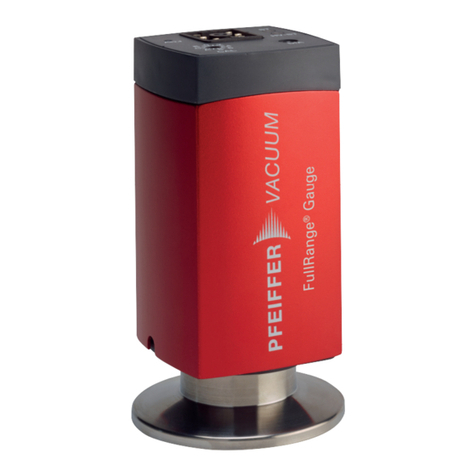
Pfeiffer Vacuum
Pfeiffer Vacuum FullRange PKR 36 Series operating instructions
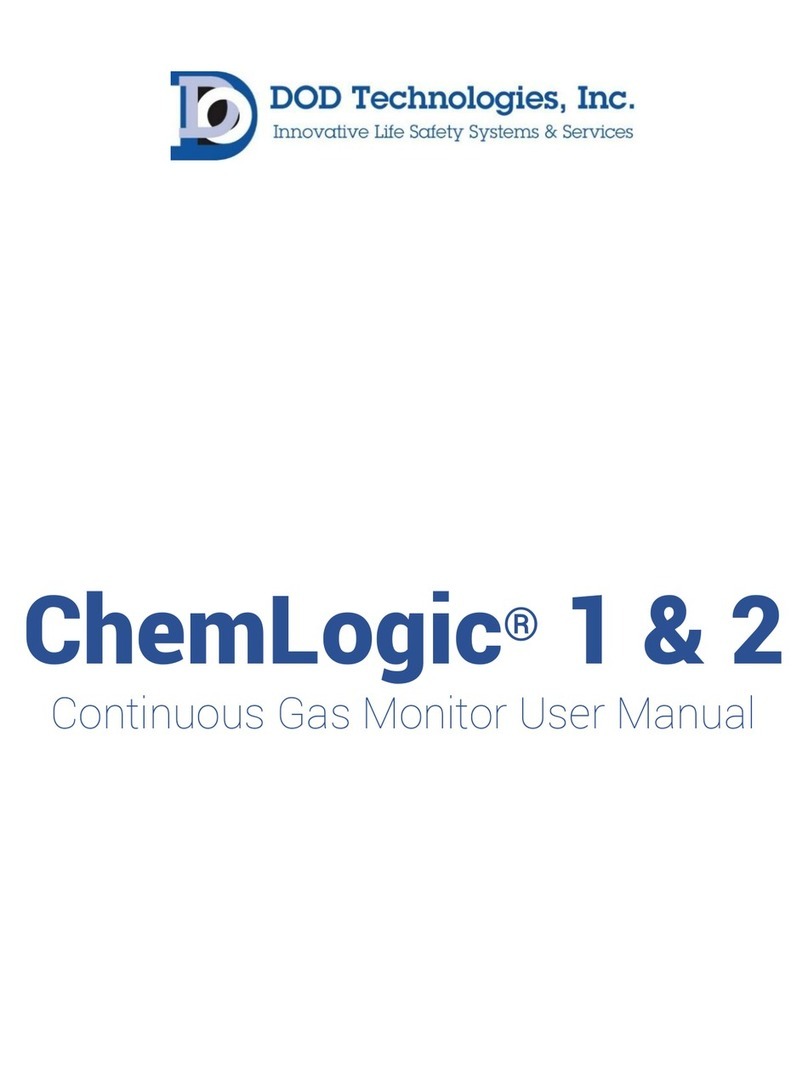
DOD Technologies
DOD Technologies ChemLogic 1 user manual
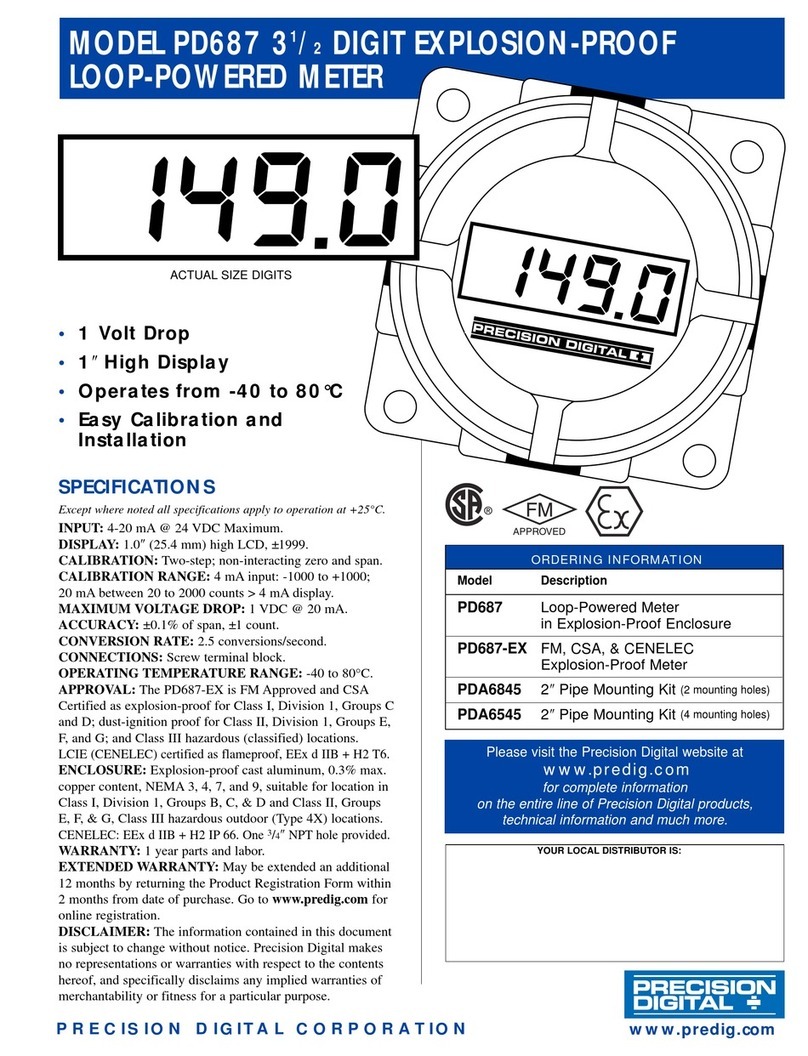
Precision Digital Corporation
Precision Digital Corporation PD687 quick start guide
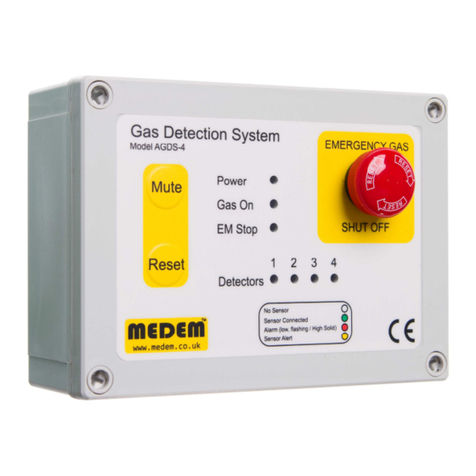
Medem
Medem AGDS-4 installation instructions

3M
3M QUESTempo 34 user manual
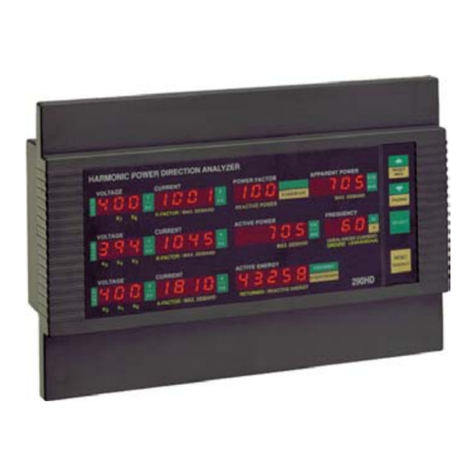
Satec
Satec PM290 reference guide

